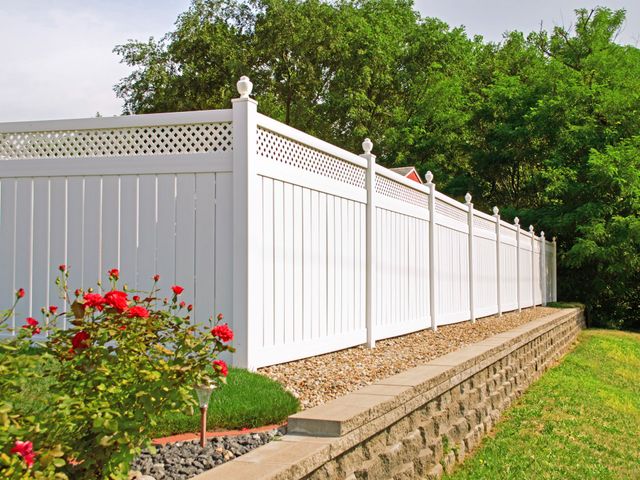How Color Psychology Can Transform Your Interiors color isn’t just decorative—it’s deeply psychological. From influencing moods to affecting behavior, the shades that fill your home have the power to completely transform how you feel and function within a space. Welcome to the vibrant world of Color Psychology in Interiors, where your walls do more than just reflect light—they reflect emotion, identity, and intention.

The Essence of Color Psychology in Interior Design
Understanding Color Psychology in Interiors means recognizing that every hue carries its own psychological weight. Whether consciously or not, the colors in your home shape your thoughts, drive your behavior, and either elevate or suppress your mood. Interior designers and homeowners alike can harness this power to craft spaces that not only look beautiful but feel purpose-built.
The art lies in the balance: choosing colors that resonate with the intended energy of the room while aligning with the personalities of those who inhabit it.
The Emotional Language of Color
Every color has a unique emotional fingerprint. Here’s how key hues can influence your interiors:
Red – Passion and Energy
Red is the color of stimulation. It raises energy levels, encourages lively conversation, and brings a sense of urgency. In dining rooms or social spaces, it can spark appetite and dynamic exchanges. But beware—too much red can evoke aggression or anxiety.
Blue – Calm and Clarity
Blue evokes serenity. It’s a staple in bedrooms and bathrooms where calmness is key. Depending on the shade, blue can be crisp and modern or cozy and nautical. It’s the preferred color for reducing stress and slowing respiration and heart rate.
Yellow – Optimism and Joy
Yellow mirrors sunlight—cheerful, bright, and optimistic. It’s perfect for kitchens, entryways, or small spaces needing a punch of positivity. However, in excess, yellow can overstimulate, leading to frustration or restlessness.
Green – Balance and Restoration
The most restful color for the eye, green strikes a balance between warm and cool. It symbolizes nature, health, and renewal. In living rooms and home offices, it promotes concentration, harmony, and healing.
Purple – Luxury and Creativity
Historically the color of royalty, purple adds depth, mystery, and luxury. Lighter shades like lavender are calming and romantic; deeper shades evoke richness and drama. Ideal for bedrooms, reading nooks, or creative zones.
Orange – Enthusiasm and Warmth
Vibrant and invigorating, orange blends the energy of red and the happiness of yellow. It’s ideal for exercise rooms or spaces designed for movement and creativity. Orange can also evoke warmth in social settings.
Neutral Shades – Sophistication and Stability
Whites, beiges, greys, and taupes create a clean and sophisticated palette. Neutrals serve as grounding backgrounds, allowing accent colors to shine. They provide visual rest while offering timeless elegance.
Zone Planning with Color Psychology
Smart use of Color Psychology in Interiors goes beyond wall paint. It can help designate zones within open-concept spaces, subtly guiding behavior.
- Dining Area: Warm tones like terracotta or mustard enhance appetite and conversation.
- Home Office: Cool blues and gentle greens enhance concentration and reduce mental fatigue.
- Bedroom: Muted lavenders, blush tones, or sage greens foster relaxation and intimacy.
- Living Room: A neutral base with pops of vibrant color fosters both calm and lively interaction.
By assigning intentional colors to each zone, your interiors gain a functional rhythm—moving from energizing to relaxing, public to private.
How Light Influences Color Perception
Color does not live in a vacuum. Light—both natural and artificial—greatly affects how colors appear and feel.
- Natural Light: South-facing rooms receive warm, bright light, perfect for cooler hues. North-facing rooms tend to be dimmer and cooler, so warm tones counterbalance the coolness.
- Incandescent Lighting: Adds warmth, making reds, oranges, and yellows pop but muting blues.
- Fluorescent Lighting: Emphasizes blue tones, often giving a cold, clinical feel.
- LED Lighting: Offers more flexibility and control, allowing better matching of the light source to your color palette.
Designing with Color Psychology in Interiors means considering how a shade shifts from morning to night, from winter to summer.
Creating Contrast and Harmony
Color harmony isn’t just about selecting complementary colors; it’s about psychological balance. You want contrast, yes, but not at the expense of cohesion.
The Rule of 60-30-10
A time-tested strategy:
- 60% dominant color (walls, large furniture)
- 30% secondary color (textiles, drapes, accent chairs)
- 10% accent color (art, pillows, decor)
This creates a rhythm, allowing the eye to move comfortably through a room. It also allows you to incorporate bolder shades without overwhelming the senses.
Accent Walls and Unexpected Touches
A deep navy wall in a neutral room can create drama without stress. A coral-colored door inside a white hallway sparks curiosity. The key to using bold colors with confidence lies in moderation and purpose.
Color Psychology for Small vs. Large Spaces
The size of your space will affect how a color feels:
- Small Rooms: Light, cool tones like soft grey, misty blue, or pale blush make the room feel larger and airier.
- Large Rooms: Deeper, warmer colors add coziness. Earthy shades like ochre, rust, or moss green make expansive rooms feel more intimate.
In both cases, texture plays a crucial role. A matte navy wall versus a high-gloss navy cabinet will evoke vastly different moods.
Cultural Interpretations of Color
Cultural backgrounds influence how we respond to colors. While Color Psychology in Interiors has universal patterns, nuances exist:
- In Western cultures, white signifies purity and cleanliness; in many Eastern cultures, it can symbolize mourning.
- Red is lucky in Chinese traditions, associated with good fortune and celebration.
- Blue in Middle Eastern cultures represents safety and protection.
Understanding cultural color meanings is essential, especially in multicultural households or for designers working with international clients.
Kids’ Rooms and Color Psychology
When designing for children, it’s tempting to go bold. But Color Psychology in Interiors suggests moderation even in playful spaces.
- Bright red may be too stimulating and lead to hyperactivity.
- Yellow can be cheerful but may cause frustration if too intense.
- Light blues and greens are calming and support restful sleep and learning.
As children grow, involving them in color choices can be empowering. They’ll often gravitate toward colors that reflect their developing personality.
Color Psychology in Rental and Temporary Spaces
If painting is not an option, there are still creative ways to infuse color psychology into interiors:
- Removable Wallpaper: A renter-friendly way to add dramatic flair or subtle undertones.
- Textiles: Rugs, throw pillows, and curtains can drastically shift the emotional tone of a space.
- Art and Decor: Framed prints, vases, and lamps in intentional hues can convey mood without permanence.
The beauty of Color Psychology in Interiors is that it’s adaptable—no renovation required.
The Role of Color in Wellness-Focused Interiors
With the growing emphasis on wellness and mental health, color choices are increasingly important in home design.
- Biophilic Colors: Earth tones, leafy greens, and sky blues replicate the calming effects of nature indoors.
- Mindfulness Zones: Pale purples, soft greys, and sandy tones encourage meditation and reflection.
- Stress-Reducing Palettes: Cool tones like aqua, icy blue, or lavender lower anxiety levels.
Incorporating Color Psychology in Interiors can turn a chaotic home into a healing haven.
Color Trends vs. Timeless Choices
While it’s tempting to follow color trends (hello, Pantone Color of the Year!), timeless choices rooted in psychology will serve your space longer.
- Trend: Burnt orange; Timeless: Terracotta
- Trend: Chartreuse; Timeless: Olive green
- Trend: Neon brights; Timeless: Muted jewel tones
Trendy accents are best left to small, replaceable items. Let timeless, psychology-backed hues dominate the foundational elements of your home.
Expert Tips for Implementing Color Psychology
- Start Small: Test colors with samples or small accents before fully committing.
- Consider Adjacency: Think about how one room’s color flows into the next. Consistency prevents visual dissonance.
- Reflect Personality: While psychology guides us, personal associations matter. If yellow makes you smile, go for it—even in a bathroom.
- Mood Board It: Visualizing your palette on a mood board helps you see how colors interact before executing.
Color Psychology in Interiors isn’t just theory—it’s a powerful tool that, when used intentionally, can shape your home into a space of purpose, pleasure, and peace. Whether you seek motivation, tranquility, focus, or warmth, the perfect palette is waiting to unlock a deeper connection to your space.
From bold feature walls to subtle accent details, the hues you choose don’t just decorate your home—they define how you live in it. So choose wisely, color joyfully, and let your interiors speak the emotional language you most want to hear.






